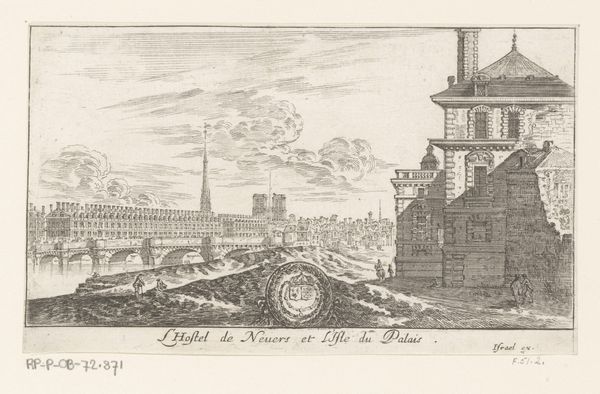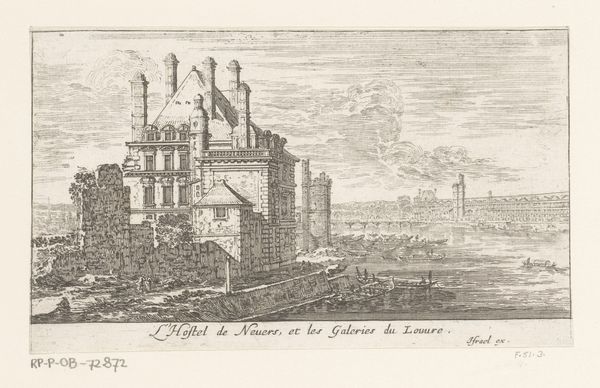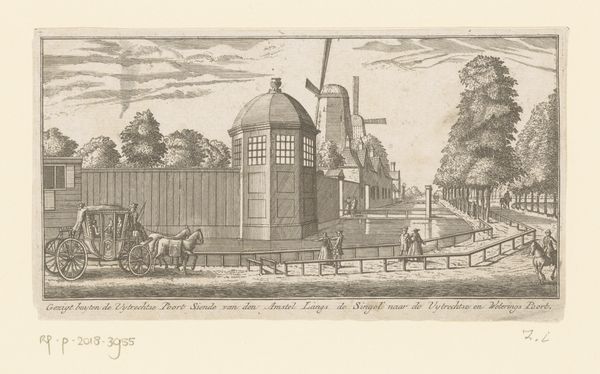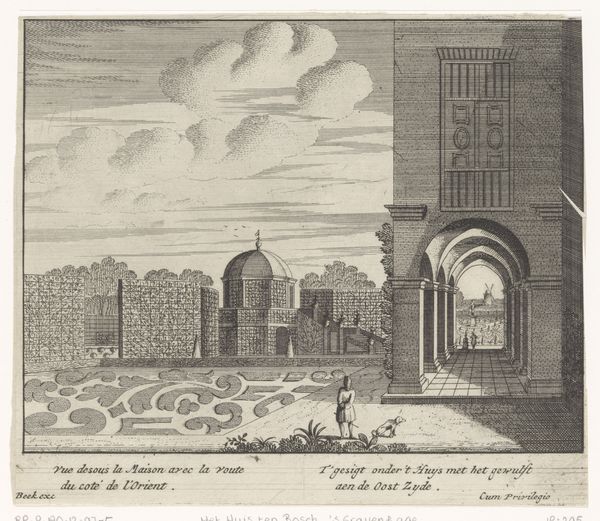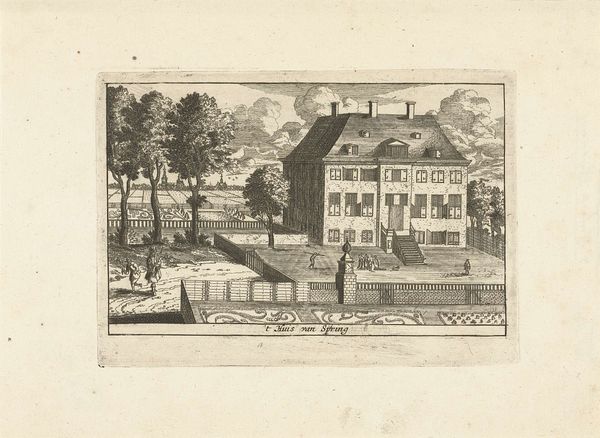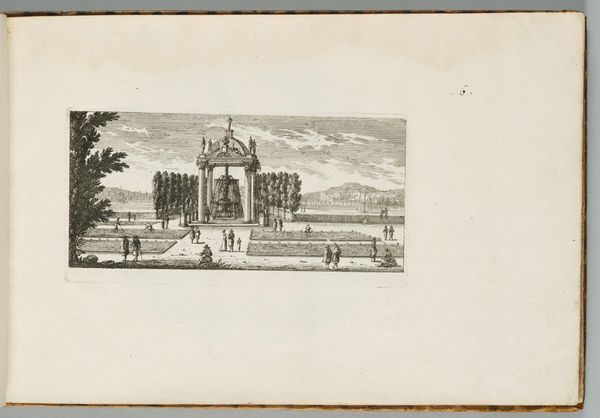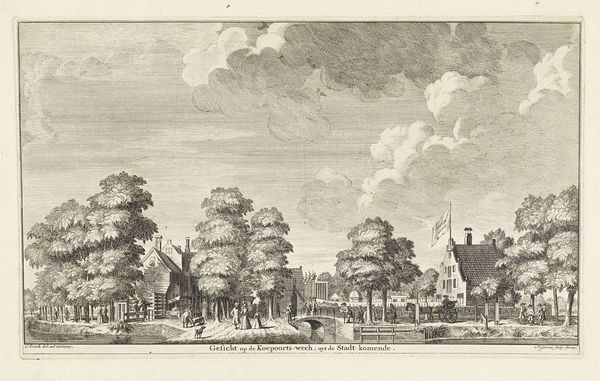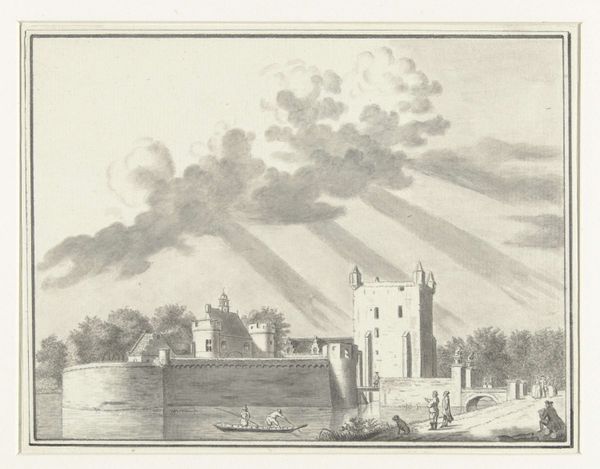
Dimensions: height 126 mm, width 218 mm
Copyright: Rijks Museum: Open Domain
Curator: "Fireworks at a Pavilion," made between 1766 and 1768 by Johannes van Hiltrop. It’s an engraving now housed at the Rijksmuseum. What strikes you immediately about this image? Editor: Well, visually, it's quite explosive. There's this elaborate structure at the center engulfed by fireworks, like a temple being consecrated, or maybe even destroyed. All that symbolic intensity of fire. Curator: And consider that intensity in relation to its making. The line engraving process—meticulous, repetitive labor to produce such intricate detail on a metal plate. Look at the dense crosshatching creating the night sky. The artisanal work that went into creating this image for wider circulation. Editor: Precisely! These weren't mere spectacle for pure entertainment, these carefully orchestrated firework displays were imbued with very specific iconographic programs. Observe the cherubic figure at the summit; the building as a classical edifice referencing knowledge, the history of ideas… Curator: Right, a constructed temporality—a monument created to burn. Temporary architecture and labor all point to the spectacle of power. This engraving itself is an artifact of that. This was designed to be widely circulated—replicating power through distribution, a proto mass media imprint if you like. Editor: Absolutely. And if we dig into that "spectacle of power," think of fireworks traditionally: transformative symbols, evoking fleeting glory, even hubris. What appears beautiful and wondrous also acknowledges a transition, even a potential for something destructive and purgative, don’t you agree? Curator: Yes, there is that fleeting nature, so much material production leading to its annihilation as performance, even waste. Was it worth the raw materials? What sort of labor went into building the launching structure alone, which you can just see around the central pavilion. The amount of wood! Editor: Looking closer, that relationship between the temporary wooden framework supporting it all seems essential to its full symbolic picture. It makes one wonder, does Van Hiltrop try to illustrate, even comment on this fragile, transitional support as fundamental to our viewing and experience? Curator: Fascinating—a temporary structure supporting the ephemeral expression of power… a really insightful point to conclude our brief exploration! Editor: Indeed, bringing fresh questions for a future viewer into focus—it's all in those details.
Comments
No comments
Be the first to comment and join the conversation on the ultimate creative platform.
